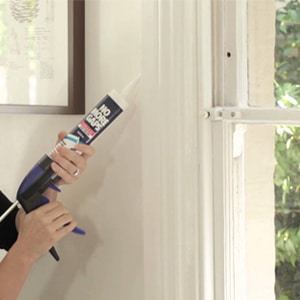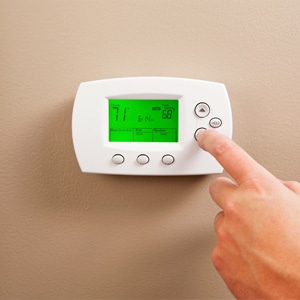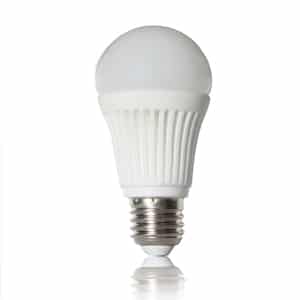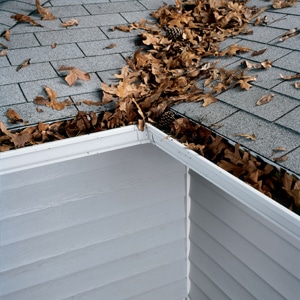Colder temperatures are right around the corner. And winter in the Northeast can have an significant impact on your home – inside and out. There are a number of simple home weatherization projects that can help keep you more comfortable this winter, while also helping to reduce your energy bills. Here are a few key areas to keep in mind when preparing your home for the colder months ahead.
1. Seal Gaps and Cracks
Exterior doors and windows are a great place to start when it comes to weatherizing your home for winter. Check the area surrounding your doors and windows for gaps and cracks, which can allow cold air in and heated air out, increasing the cost of your heating bills. Use caulk, sealants or weather stripping to seal any cracks or gaps in door frames or window frames to keep cold air out. It’s easy to add a door sweep to exterior doors to further seal a threshold, or install weather-stripping. A small investment will seal out the cold, reduce drafts, prevent insects from entering your home and reduce your energy costs.
2. Increase Insulation
Studies show that 90 percent of homes in the US are under-insulated, resulting in increased energy costs and reduced comfort for homeowners. Your home’s attic is one of the greatest sources of potential energy loss – and one of the easiest area’s for you to improve from an insulation standpoint. For DIY attic insulation, you’ve basically got two choices: loose fill insulation that is blown in, or batt insulation (the common term for blanket insulation), which is generally rolled into place. Both can be added to uninsulated attics or layered over existing material. Once you’ve decided which type is best for you, examine the material options and prices to determine the right product for you. Always check labels for specifics on whatever you buy.
3. Upgrade Thermostats
If you’d rather save your hard-earned money than spend it on rising monthly energy bills, a programmable thermostat and energy efficient light bulbs are good energy saving investments for homeowners. It’s no secret that heating and cooling account for the bulk of a home’s energy usage — an average of over $1,000 annually. Switching from a manual to a programmable thermostat is one simple way to save as much as $180 a year. The most basic programmable thermostat can be self-installed in an hour, and comes with preset temperature settings for different times of the day. Some of the newest models offer easy programming, sophisticated displays, and even communication with you via the Internet. Programmable thermostats like the Nest Learning Thermostat allows users to adjust the temperature from their smartphone – and also learns behavior and self-optimizes.
4. Protect Pipes
Wrapping pipes and using heat cables are inexpensive ways to prevent costly repairs caused by pipes bursting from extreme cold. Exposed pipes in unheated areas, pipes in exterior walls and plumbing on the outside of the home are more likely to freeze than others due to their location. Use pipe insulation to seal in warm air and prepare for the colder nights ahead. Shield outdoor faucets from freezing temperatures with a Hard Faucet Cover.
5. Invest in Energy-Efficient Light Bulbs
Now that the days are shorter and it stays darker longer, consider swapping out incandescent light bulbs with LED bulbs to help minimize energy costs. On average, an incandescent bulb may last around 1000 hours, while a compact fluorescent (CFL) bulb producing the same amount of light (in Lumens) may last around 8,000 hours, and an equivalent LED bulb may last around 25,000 hours. Because of their efficiency, LED’s are generally more costly, but the energy saved on your electric bill pays off when compared to incandescent or CFL bulbs.
6. Clear Out the Gutters and Check the Condition of Downspouts
You should make sure that the gutters are cleaned. Any debris should be cleared so that rainwater and melting snow can freely pass. The landscaping, and even the house, can be damaged if the gutters are clogged. For melting snow to drain properly from the roof, you should check for any debris that could damage the downspouts. If the downspouts are not free from debris, it can cause rusting inside the pipe.
7. Inspect the Roof, Trim Tree Branches and Limit Roof “Traffic”
Roof leaks and other problems can wreak havoc on homes and wallets, so address potential dilemmas before the winter hits. Ensure that the roof and gutters are free of dead leaves, branches and other debris. When the holidays approach, you may be climbing on or around your roof to hang lighting or install holiday decor. Keep in mind that regular foot traffic can lead to a leak, since shingles may split and flashing may crack under pressure. If you must be on the roof for inspections or holiday light hanging, it’s best to avoid stepping on shingles that appear to be compromised—whether warped, curling or cracked. Also, try not to step on roof tiles or tile cement—since these materials are also easily damaged under weight. If you have got tree branches hanging over your roof, you need to cut or trim them before rain and snow start. This is important because when snow starts, the weight of the falling snow increase quickly and the branch can fall on your roof, damaging it. You should also check your flashing and counter flashing attachments to see if they are in good condition. This is because when snow starts accumulating on the roof and over the flashings, it can cause the roof to leak.
